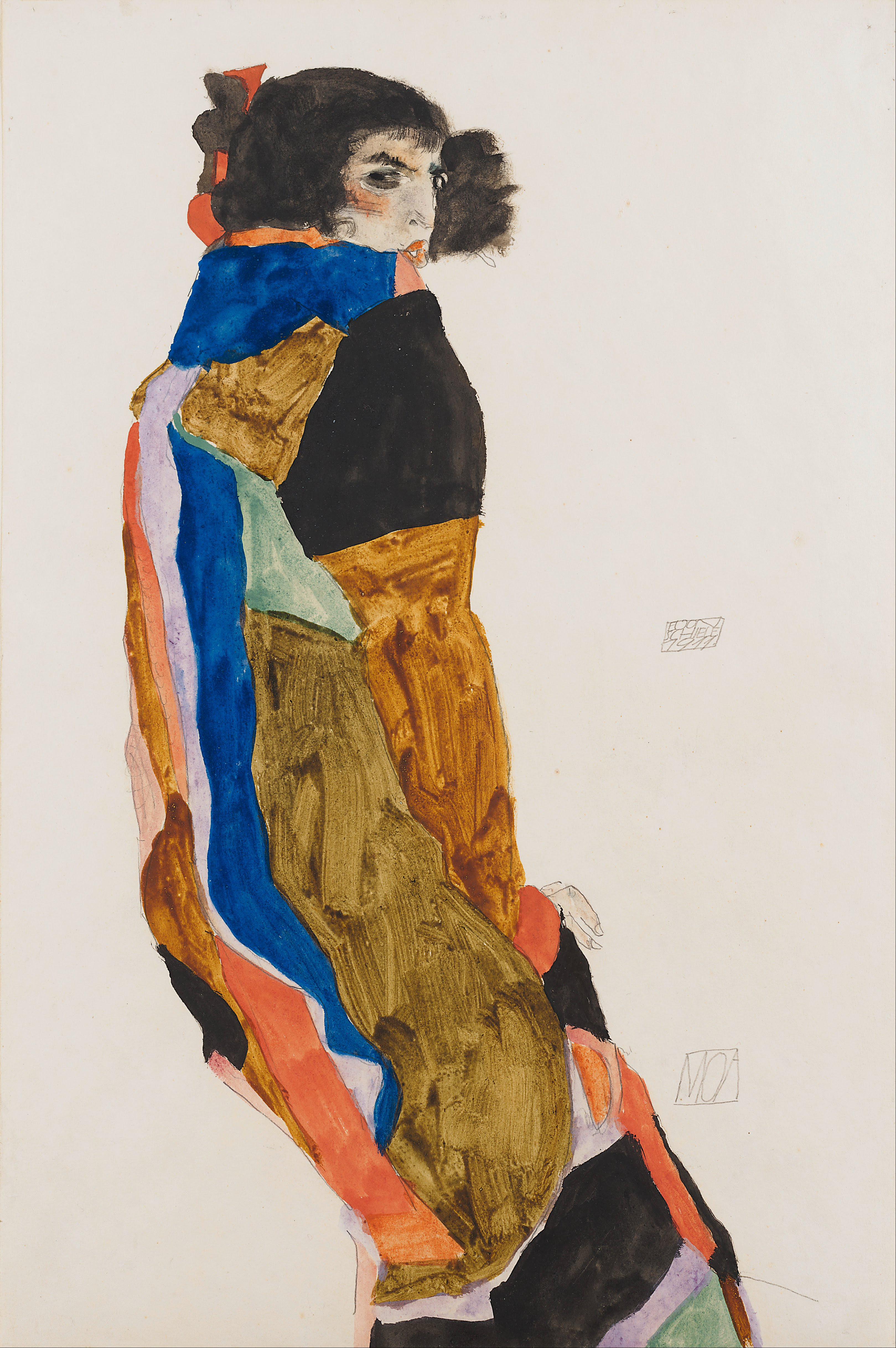I know we feature Schiele quite often, but I couldn't resist this beautiful gouache. The woman here is the dancer Moa Mandu. She was an icon of turn-of-the-century Viennese culture, and she served as Schiele’s model for numerous portraits. With her life partner Erwin Osen, an actor and mime who was also one of Egon Schiele’s close friends, she shared a fascination with forms of bodily expression, as well as with the extreme distortion of facial expressions and gestures.
Schiele found the extravagant duo entrancing. Although he was primarily a linear artist, Schiele was inspired by Mandu’s daring sense of style to create some of his most painterly work. When Osen, who was an outrageous, outgoing cabaret performer, posed for Schiele, it must have seemed to the artist as if his intense, suppressed emotions had found their external form. He was to use the vocabulary of movement he picked up from the mime in most of his later works, many of them self-portraits.
This image of Mandu numbers among the most painterly portraits of the dancer, and is also one of those which are most perfect in terms of composition and the use of colour. The ornamental architecture of the subject’s clothing in combination with her more naturalistic face still harkens back to Schiele’s great role model, Gustav Klimt. As for the friends Schiele, Mandu, and Osen, their bohemian ways were legendary — at one point, scandalizing the locals in Krumau so thoroughly that Schiele abandoned his studio in that town in 1911 after just a few months there!




Moa
gouache, watercolour and pencil • 48 x 31 cm
 Egon Schiele
Egon Schiele